#denis rovira van boekholt
Text
So.. apparently, in a Spanish-language space on twitter, Denis Rovira van Boekholt, director of episode 2x05, talked about this scene
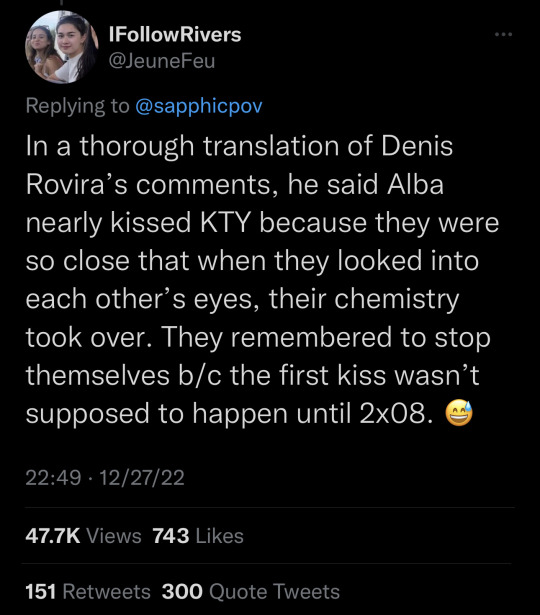
And the only instruction given for that part in the script was that Ava was supposed to lean into Bea and “breathe her in” no other specifics.
Thoughts? My mind is completely gone on this and will be for the foreseeable future. ✨😵💫✨
How lucky are we to have Alba and Kristina? Two friends who have incredible chemistry that comes so naturally?? I need a season 3 more than ever now!
#warrior nun#alba baptista#kristina tonteri young#avatrice#alba and kristina#denis rovira van boekholt#THEIR CHEMISTRY TOOK OVER#SCREAMING.#SCREAMING ETERNALLY#warrior nun s2#warrior nun bts#1k#2k#3k#1013
4K notes
·
View notes
Photo
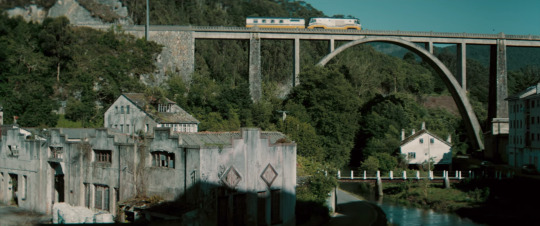
La influencia (Denis Rovira van Boekholt, 2019)
Viaducto ferroviario de Luarca / Luarca Railway Viaduct
Luarca, Asturias (Spain)
Bridge over the Negro river
Type: arch bridge.
#the influence#la influencia#denis rovira van boekholt#2019#viaducto ferroviario de Luarca#luarca railway viaduct#luarca#asturias#spain#río negro#negro river#arch bridge#bridge
2 notes
·
View notes
Text
Influenze Maligne: Recensione dell'horror spagnolo su Netflix
Influenze Maligne: Recensione dell’horror spagnolo su Netflix
Questa notte vi parliamo di Influenze Maligne, il nuovo horror spagnolo distribuito via Netflix. Questa è la nostra recensione.
Diretto dall’esordiente Denis Rovira van Boekholt (fino ad oggi solo cortometraggi), questo horror è l’ennesima collaborazione tra il colosso dello streaming ed il cinema spagnolo, con particolare attenzione al genere horror. A tal proposito ricordiamo Veronica, film…
View On WordPress
0 notes
Text
Rationale
For my PRP, I have made and directed a contemporary horror film that combines the use of found footage with traditional filming practise. I was inspired to create this because I wanted to create something that feels unpredictable and keeps the audience on edge. I was inspired by directors such as Daniel Myrick and Eduardo Sánchez (The Blair Witch Project), Lee Cronin (The Hole in the Ground), Denis Rovira van Boekholt (La Influencia, El Grifo) and Troy Wagner (Marble Hornets).
Creating the piece
I really like the found footage genre, because it creates a level of realism that you don’t find when using traditional filming methods, as there is an element of plausibility. It was pioneered by films such as The Blair Witch Project, which sparked debate at its release as to whether or not it was real, and Marble Hornets, a web series posted on YouTube, that sparked similar debates. However, these projects were so successful because they were doing something new. Now, several decades on, the found footage genre is much more saturated. Thus, I wanted to take this genre which I have always enjoyed and draw from its spirit of being unpredictable and unsettling, but to do something new. Thus I came up with the idea of switching from found footage to traditional filming mid-film, in a way which I hope will have a similar effect that found footage films had when they first debuted.
First, I had to find inspiration from the piece. I knew that I wanted to create a piece that started off as found footage and then switched unexpectedly to conventional filming; thereby setting up an expectation for the audience and consequently subverting it.
My first point of reference was existing found-footage style films. My biggest inspiration for the piece was The Blair Witch Project. It popularised the idea of using found footage to make a feature length film. It also gave me the idea of setting the piece in the woods. I liked the atmosphere created in the film in that there is a great sense that the fact that they are out alone in the wilderness means that they are isolated. Isolation is scary because it rules out the possibility of help dealing with the threat. I wanted to emulate that atmosphere in my own piece.
Another piece of found footage filming that greatly inspired me is the ‘Marble Hornets’ series. It did something rarely achieved since The Blair Witch Project in 1999, which is that it created the illusion that the story could actually be real, and it did this by taking the found footage style of filming to a new platform; the internet. It was certainly not the only series of that style to rise in the early days of YouTube, but it was arguably the most popular in that niche. It quickly established, in the same way that The Blair Witch Project did, a reason rooted in reality for the filming to be occurring, and therefore justifying the possibility that it might be real. In The Blair Witch Project, they are filming their own investigation; in Marble Hornets they are creating a short film. This was the second stimulus for the story of my piece- finding a justification for the existence of the “found footage”. I was trying to keep the narrative simple because there were time constraints. Knowing that my actors were going to be my fellow students, and thus a similar age to me, got me thinking about situations I or my peers might be filming ourselves. My idea was a kind of holiday vlog. So, combining this with my first piece of inspiration (filming the piece in the woods) I came up with the idea of a hiking trip! This fulfilled both my criteria (wilderness and justified filming) and was practically very achievable- I wouldn’t need too much in the way of props and costume.
Now that I had a situation, I came to the trickier part of the story; the threat. I had lots of inspiration for this, so it was a question of finding something that was achievable, interesting, and fit with the themes of my piece.
Both The Blair Witch Project and the Marble Hornets series had a supernatural threat. I really loved this idea- a supernatural threat ties in perfectly with the isolation of my scenario because it adds to the audience’s feeling of helplessness and dread- how do you fight something that has no basis in reality? Furthermore, both of the aforementioned supernatural threats are vague and undefined in order to add to the feeling of helplessness. However, there were practical considerations to take into account. Both of these pieces use an abundance of effects and props to create their supernatural menace, and I had to consider how much of this I would realistically be able to achieve. The problem I faced was not only that I would need these elements, but that they would have to be very good, because it’s very easy for something like this to appear quite amateur in an already low budget medium. Overall, I felt that trying to make my threat supernatural would be making life unnecessarily difficult for myself, so I decided to opt for something rooted in reality.
That didn’t mean that any of the above was a pointless rumination, however. There was inspiration I could take from the supernatural menaces mentioned and incorporate that into my own threat. The main thing I had learned was the fear of the unknown. How could I take something possible and incorporate this unknown, dangerous element? This was my inspiration for the character that I created to be the villain of the piece; ‘Red’.
Even his name is an unknown factor. It’s not so ridiculous that it’s clearly not a name, but it’s not a normal choice. Is it an alias? Does he have something to hide? Every decision I made for the character was supposed to make the audience ask themselves questions; how did he get injured? Why is he out here on his own? The element of mystery, as I had learned from The Blair Witch Project and from Marble Hornets, creates a sense of uncertainty in the audience. And this sense of uncertainty creates a sense of unease. I took inspiration from human characters that are unsettling. A film that really inspired me was ‘Us’, directed by Jordan Peele. Some of the characters in that film are doppelgangers, and you can tell which the doppelgangers are because they are unsettling in odd, subtle ways.
Once I had created this character, the story flowed quite naturally from there. Again, I was trying to keep the narrative simple, and I had a serial killer and three innocents alone in the woods together so the obvious choice was to build up to him attempting to murder them. And with that, I had devised my story.
The creation of the script
Another thing that adds to the level of realism in a found footage film, in tandem with the element of plausibility, is that often the dialogue feels very natural and un-staged. This is because with many found footage films, such as The Blair Witch Project, the dialogue is largely improvised. I definitely wanted to incorporate this into my piece, because it creates a greater sense of naturalism that found footage creates so well, so when I was writing the script, I used a combination of actual script writing with directed improvisation. For instance: see appendix a.
The parts of the script in italics are improvised action, whereas lines that are important to drive the plot are scripted traditionally.
Alongside creating a script from improvisation I also tailored the characters I created to suit the actors I had cast. My thinking behind this was that it would make the improvisation seem more natural is the cast felt comfortable within the characters that they were playing, and this would encourage natural dialogue and a feeling of realism for the audience. For horror media to be scary, there needs to be an element of truth in it, because if it is entirely removed from reality then there will be no perceived threat for the audience.
Chemistry is also very important on screen, and I was lucky enough to be able to use actors who have known each other for some time, so that the relationships would seem real.
It would have been interesting to do this project with people I didn’t know so well. In that instance, I would have created the characters with them, rather than for them. It would have taken a much longer rehearsal process.
Once I had the script, it was time to storyboard the piece. Storyboarding the found footage section of the piece was easy enough, because it would all be one shot; it could be as messy as it came out, and it just followed the narrative of the scenes I had drafted when writing the script. However, the second section of the piece, which is filmed conventionally, would be more complex. I wanted it to contrast as much as possible with the found footage portion in order to subvert what the audience is expecting (which is a continuation of what is already established). My main inspiration was the film ‘The Hole in the Ground’, directed by Lee Cronin. This film has a really good sequence in where the main character is searching in the woods. It feels very threatening, as if she is in real danger, but you don’t know what the danger is. Careful observation led me to the conclusion that short shot that are quite different from each other are key, because they keep the audience on edge and give them no real time to acclimatise to a shot. Although in contrast, a few longer shots are needed to break it up so it doesn’t seem manic. Another style of shot I had observed in horror films is the shot where you can see something the character on screen can’t, or vice versa. If you can see something the character can’t, it leads to a feeling of helplessness. You want to shout; “watch out!” but you know you are powerless to stop it happening. Here is an example of a shot where I used this: see Appendix b. On the other hand, the shot where the character sees something that the audience can’t creates an unknown for the audience- what is the danger? Where is the danger? An example of this would be this shot from La Influencia (Appendix c) where the main character has seen something before the audience has.
A few other shots that particularly inspired me were from ‘The Hole in the Ground’, which has the sequence of the main character running through the woods that utilises lots of shots where she crosses the screen to show great distance being travelled; see appendices d and e for a direct comparison with a shot that I took, and also the Criminal Minds episode “Mr & Mrs Anderson”, which has a sequence where a character is strangled that inspired my own sequence. I particularly liked the point of view shot of the victim being strangled, because it brought the viewer into the perspective of the victim.
So with all this inspiration I created my storyboard. I knew that there were going to be time constraints- I only had a day to film because my actors were busy. I created my storyboard very specifically so I would know exactly what I wanted. This also meant that on the day I would find a contrast in filming styles- the sound footage would be semi improvised and the conventional footage would be filmed in a very rigorous way. I hoped this would translate to a dramatic shift of feeling in the actual film.
Filming the piece
On the day of filming, I allowed the actors some time to improvise extra scenes in the section before the threat (Red) appears. This had several purposes- one, to flesh out the more scripted scenes with a few extra snippets to communicate a sense of time- more short scenes gives the impression of time passing. Secondly, I had found during the rehearsal process that the actors were very receptive to the characters and the story, truly embodying them, and I wanted to give the actors a chance to bring their own short sections as a chance for them to demonstrate the choices they had made for their characters. For instance, there were moments that Sam’s character struggled working the camera. This allowed the other characters to make fun of her age, which establishes their playful relationship and that Sam is their elder, and it adds a moment of comedy that will help to lull the audience into a false sense of security. I have come to find that my own personal style of directing benefits from a good ratio of instruction and collaboration. And finally, it gave the actors a chance to warm into the characters before the drama of the second half.
Another challenge on the day of filming, as mentioned briefly above, was the timings. I had only one day to film the piece, as my actors (being fellow third years with their own PRPs to create) are very busy. The story takes place over several days, so I filmed the scenes out of order (for instance, all of the night-time scenes, regardless of their chronology, had to be filmed last). This provided a challenge for my actors, because they had to jump around their emotional states. I tried to help them with this in rehearsals. I kept the story pretty simple, and I made sure that they were all very familiar with it in our first rehearsal, nearly a month before the filming date.
Another simple way of communicating the passage of time was by using different locations, so I found a couple of different wildernesses to film in that were close to each other.
Editing the piece
Now that I had filmed the piece, I came to the second important part of the process of creating the piece- editing it. Creating the base footage was pretty easy, because I had lots of material to choose from when I had let the actors improvise the found footage, and the second section (contemporary filming) had been planned out to thoroughly that it was mostly just a process of trimming and editing the shots together. But then we came to the more complex parts; visual and sound editing.
The visual editing of the piece was mostly colour grading it. I looked at lots of horror films for inspiration for this. Often horror is set at the night-time, but mine was in the day, so I decided to take out a lot of the brighter tones to make the mood more sombre and less upbeat. I also darkened it slightly. A film that inspired me would be The Ritual, which is also set in the woods. Even though some of it is in day time, the muted colours and the darkness leave you feeling uneasy; see Appendix f for an example. The other thing that I did when editing the piece was to make the found footage section lower quality. This was to add to the homemade feel of it, and to contrast with the switch to conventional filming.
I also had lots of inspiration for the audio. I’m a big fan of horror games; I think an interactive experience, when well executed, can be a terrifying experience. For the soundtrack, I took inspiration from classics such as Slender, created by Mark J. Hadley, which excellently builds tension throughout the 20 or so minutes it spans in a very simple manner. The aim of the game is to collect 8 pages. After every page that is picked up, a new sound starts (e.g. heavy breathing, static sounds, and an unsettling base note). I incorporated this simple layering of sounds to create tension into my piece. The part of my film that is conventional footage is split into three sections (Jo looking for Lucy, Lucy running then being attacked by Red, and Jo finding Lucy’s body). So, inspired by Slender, I added new parts of the soundtrack in each new ‘scene’ (they are not quite distinct enough to be labelled separate scenes but they are definitely distinct. After the first ‘scene’, I incorporated some creepy base notes. In the third ‘scene’ I added more higher pitched, tenser sounds. This created an effect of layering the different sounds on top of each other, increasing the tension. I also saw a short film I liked called El Grifo by the same director that filmed La Influencia (Denis Rovira van Boekholt). In this film, the soundtrack is really thematic, as the film is centred around plumbing, so the soundtrack sneakily features sounds like water dripping to point towards the terror in the film. I thought I could incorporate this into my own work by really emphasising the panting sounds of the two female characters as they run away, because this hints towards how Red will kill Jo at the end; strangulation. It will make the audience think about being short of breath before the strangulation happens.
The results
Firstly, let’s talk about how I achieved the criteria that I set out to fulfil, before looking at things that could have been improved upon.
The film subverts the traditions found in the found-footage genre by breaking the unspoken rules; the rule that this film is potentially real because it is justified by being “found footage”. It does this by establishing these rules in a relaxed, friendly atmosphere, and then the violent plot shift coincides with the breaking of these rules; the found footage is gone and we turn to conventional filming.
The dialogue feels natural and believable because the characters that actors played were easily accessible and comfortable for them; as I had written them to be. The actors really took to the situation and characters and I loved working with them.
A fearful atmosphere was created in the conventionally filmed portion of the film by the use of camera work that I did, that was inspired by directors such as Lee Cronin, Denis Rovira van Boekholt and Daniel Myrick, as detailed above.
The tension was also enhanced by the sound and visual editing that I did in post-production.
There are a few things that I would have improved upon retrospectively. Firstly, I would have done the vfx (cut on Red’s face) in advance, because it was difficult on location when it was windy.
I would have liked more time to film. Of course, this wasn’t possible, but if theoretically it were, I would like to have worked with the actors to find a more genuine sense of fear, to evoke the same in the audience. This could have been done with breathing exercises to build panic, or we could have workshopped ways to get the actors to a place of terror (in a safe and healthy environment, of course). In fact retrospectively this could have been done in rehearsals to abide with the time constraints of this project. I did this for the last scene though and the atmosphere is right. I did this by having everyone start their drinks and creating the friendly relaxed atmosphere that I wanted at the start of the scene (to lull the audience into a false sense of security before the reveal of Red).
I also think I could have built the tension more effectively. I was going for a real shock to the system when the footage becomes conventional, but I think that the easy atmosphere at the start might have made this change a little too jarring.
2 notes
·
View notes
Photo


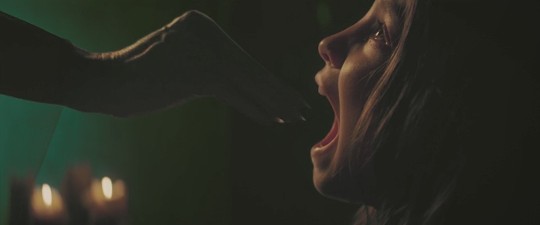



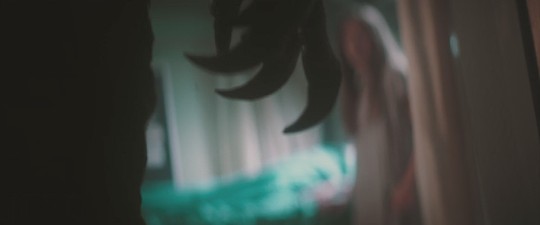

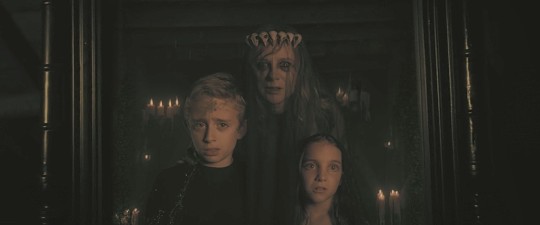

La influencia (Denis Rovira Van Boekholt, 2019)
2 notes
·
View notes
Photo


CALIFICACIÓN PERSONAL: 5 / 10
Título Original: La influencia
Año: 2019
Duración: 99 min.
País: España
Director: Denis Rovira van Boekholt
Guion: Michel Gaztambide, Daniel Rissech, Denis Rovira van Boekholt (Novela: Ramsey Campbell)
Música: Arnau Bataller
Fotografía: Isaac Vila
Reparto: Manuela Vellés, Maggie Civantos, Alain Hernández, Emma Suárez, Claudia Placer, Mariana Cordero, Ramón Esquinas, Bianca Kovacs, David Luque, Daniela Rubio
Productora: Mogambo / Nadie es perfecto
Género: Horror
https://www.imdb.com/title/tt4008566/
TRAILER: https://www.youtube.com/watch?v=xtlfJHsjGBQ
0 notes
Photo


La influencia (Denis Rovira Van Boekholt, 2019)
1 note
·
View note
Text
Todos os filmes originais Netflix, classificados do pior ao melhor
A Netflix está investindo cada vez mais na produção de filmes exclusivos. Mais de três centenas deles já foram lançados e estão disponíveis na plataforma do serviço de streaming. A Bula avaliou todas as produções originais e as reuniu em uma lista, organizada do pior ao melhor filme. O ranking levou em conta as notas atribuídas aos títulos no IMDb, uma das maiores plataformas de cinema do mundo.
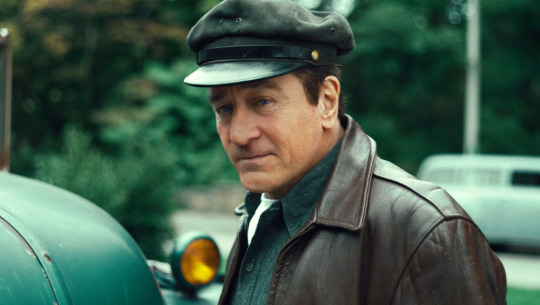
A Netflix está investindo cada vez mais na produção de filmes exclusivos. Mais de 400 já foram lançados, e todos estão disponíveis na plataforma do serviço de streaming. A Bula avaliou as produções originais e as reuniu em uma lista, organizada do pior ao melhor filme. O ranking levou em conta as notas atribuídas aos títulos no IMDb, uma das maiores plataformas de cinema do mundo. Alguns destaques são: “Roma” (2018), de Alfonso Cuarón, que ganhou o Oscar de Melhor Filme Estrangeiro em 2019; e “História de Um Casamento” (2019), dirigido por Noah Baumbach, que concorreu em seis categorias do Oscar 2020. É importante lembrar que a lista não tem intenção de ser universal ou definitiva, apenas representa as avaliações recebidas pelos filmes na plataforma pesquisada.
428 — Falcons em Jogo (2018), Olivier Afonso
427 — The Last Days of An American Crime (2020), Olivier Megaton
426 — Mrs. Serial Killer (2020), Shirish Kunder
425 — Drive (2019), Tarun Mansukhani
424 — Oh, Ramona! (2019), Cristina Jacob
423 — Solteiramente (2020), Katleho Ramaphakela
422 — Boi (2018), Jorge M. Fontana
421 — The Ridiculous 6 (2015), Frank Coraci
420 — Paradise Beach (2019), Xavier Durringer
419 — Encontro Fatal (2020), Peter Sullivan
418 — Hot Gimmick: Girls Meet Boy (2019), Yûki Yamato
417 — Zerando a Vida (2016), Steven Brill
416 — A Pequena Suíça (2019), Kepa Sojo
415 — O Aplicativo (2019), Elisa Fuksas
414 — Fim do Mundo (2019), McG
413 — A Última Coisa Que Ele Queria (2020), Dee Rees
412 — Perda Total (2018), Kyle Newacheck
411 — Te Quiero, Imbécil (2020), Laura Mãná
410 — Dívida Perigosa (2017), Martin Zandvliet
409 — Os Infiéis (2020), Stefano Mordini
408 — Resgate em Malibu (2019), Savage Steve Holland
407 — Influência (2019), Denis Rovira van Boekholt
406 — Sandy Wexler (2017), Steve Brill
405 — Um Emprego de Verdade (2020), Carlos Morett
404 — Quatro Histórias de Fantasmas (2020), Zoya Akhtar e outros
403 — O Silêncio do Pântano (2019), Marc Vigil
402 — Seis Vezes Confusão (2019), Michael Tiddes
401 — Fica Comigo (2017), Brent Bonacorso
400 — A Gente se Vê Ontem (2019), Stefon Bristol
399 — O Bom Sam (2019), Kate Melville
398 — A Barraca do Beijo (2018), Vince Marcello
397 — The Silence (2019), John R. Leonetti
396 — Nosso Último Verão (2019), William Bindley
395 — O Príncipe do Natal (2017), Alex Zamm
394 — Todas as Sardas do Mundo (2020), Yibran Asuad
393 — Desperados (2020), LP
392 — Pokémon Mewtoo Contra-Ataca (2019), Kunihiko Yuyama
391 — Obsessão Secreta (2019), Peter Sullivan
390 — O Outro Pai (2019), Gabriela Tagliavini
389 — A Grande Luta (2020), Jay Karas
388 — O Príncipe do Natal: O Casamento Real (2018), John Schult
387 — A História Real de um Assassino Falso (2016), Jeff Wadlow
386 — Cascavel (2019), Zak Hilditch
385 — Mudo (2018), Duncan Jones
384 — Crazy Trips: Budapeste (2019), Xavier Gens
383 — O Feitiço de Natal (2018), Bradley Walsh
382 — Earth And Blood (2020), Julien Leclercq
381 — Pai do Ano (2018), Tyler Spindel
380 — A Babá (2017), McG
379— O Sol de Riccione (2020), Younuts
378 — Io (2019), Jonathan Helpert
377 — Blockbuster (2017), July Hygreck
376 — A Vingança de Maria (2019), Pedring Lopez
375 — Bright (2017), David Ayer
374 — iBOY (2017), Adam Randall
373 — TAU (2018), Federico D’Alessandro
372 — Fe@rless (2020), Cory Edwards
371 — Tribu Urbana Dance (2018), Fernando Colomo
370 — #realityhigh (2017), Fernando Lebrija
369 — Quando Nos Conhecemos (2018), Ari Sandel
368 — O Natal Está no Ar (2019), Leslie Small
367 — Dude: A Vida é Assim (2018), Olivia Milch
366 — O Monstro do Monstro de Frankenstein (2019), Daniel Gray Longino
365 — A Volta Por Cima (2019), Remy Four
364 — MILF (2020), Axelle Laffont
363 — Mentiras Perigosas (2020), Michael M. Scott
362 — The Cloverfield Paradox (2018), Julius Onah
361 — A Tenente de Cargil (2020), Sharan Sharma
360 — O Príncipe do Natal: O Bebê Real (2019), John Schultz
359 — Death Note (2017), Adam Wingard
358 — Feliz Aniversário de Casamento (2018), Jared Stern
357 — Coffee & Kareem (2020), Michael Dowse
356 ¬— Crush à Altura (2019), Nzingha Stewart
355 — Vende-se Esta Casa (2018), Matt Angel e Suzanne Coote
354 — Extinção (2018), Bem Young
353 — Cartão de Natal (2017), Ernie Barbarash
352 — Kart Nervoso (2020), Owen Trevor
351 — David Brent: A Vida na Estrada (2018), Ricky Gervais
350 — Revenger (2018), Lee Seung-won
349 — O Caderno de Sara (2018), Norberto López Amado
348— Dead Kids (2019), Mikhail Red
347 — Histórias Assustadoras do Capitão Cueca Hackeando o Halloween (2019), Mark Banker
346 — XOXO: A Vida é Uma Festa (2016), Christopher Louie
345 — Paradox (2016), Michael Hurst
344 — O Silêncio da Cidade Branca (2019), Daniel Calparsoro
343 — Special Correspondents (2016), Ricky Gervais
342 — Presságio (2020), Alejandro Montiel
341 — Preso em Casa (2019), Samit Basu
340 — Estranhos em Casa (2020), Olivier Abbou
339 — Próxima Parada: Apocalipse (2018), David. M. Rosenthal
338 — Fortuna pelos Canos (2020), Anurag Kashyap
337 — Escola de Solteiras (2019), Luis Javier Henaine
336 — Nu (2017), Michael Tiddes
335 — Pato Pato Ganso (2018), Chris Jenkins
334 — Polar (2019), Jonas Åkerlund
333 — Amor em Obras (2019), Roger Kumble
332 — No Ritmo da Sedução (2018), Tinge Krishnan
331 — Let’s Dance (2019), Ladislas Chollat
330 — Altos Negócios (2020), Cüneyt Kaya
329 — The After Party (2018), Ian Edelman
328 — Dia da Namorada (2017), Michael Paul Stephenson
327 — Gostos e Cores (2017), Myriam Aziza
326 — Mistério no Mediterrâneo (2019), Kyle Newacheck
325 — A Missy Errada (2020), Tyler Spindel
324 — A Princesa e a Plebeia (2018), Michael Rohl
323 — Troco em Dobro (2020), Peter Berg
322 — Close Enemies (2018), David Oelhoffen
321 — Um Passado de Presente (2019), Monika Mitchell
320 — Modo Avião (2020), César Rodrigues
319 — A Última Gargalhada (2019), Greg Pritikin
318 — Um Amor, Mil Casamentos (2020), Dean Craig
317 — Pelas Ruas de Paris (2019), Élisabeth Vogler
316 — Pássaro do Oriente (2019), Wash Westmoreland
315 — Órbita 9 (2017), Hatem Khraiche
314 — Mãe e Muito Mais (2019), Cindy Chupack
313 — Duda e os Gnomos (2017), Peter Lepeniotis
312 — Suzzanna: Buried Alive (2019), Rocky Soraya
311 — Contando os Segundos (2016), Priyadarshan
310 — O Limite da Traição (2020), Tyler Perry
309 — Um Crime para Dois (2020), Michael Showalter
308 — Castelo de Areia (2017), Fernando Coimbra
307 — Munafik 2 (2018), Syamsul Yusof
306 — Natal 5 Estrelas (2018), Marco Risi
305 — Lá Vêm Os Pais (2018), Robert Smigel
304 — Esquadrão 6 (2019), Michael Bay
303 — Sergio (2020), Greg Barker
302 — O Terceiro Olho (2018), Rocky Soraya
301 — O Casamento de Ali (2018), Jeffrey Walker
300 — Campo do Medo (2019), Vincenzo Natali
299 — Juanita (2019), Clark Johnson
298 — A Escalada (2017), Ludovic Bernard
297 — Boneca Maldita (2018), Rocky Soraya
296 — De Quem é a Culpa? (2020), Ruchi Narain
295 — A Mulher Mais Odiada dos Estados Unidos (2017), Tommy O’haver
294 — Clinical (2017), Alistair Legrand
293 — À Queima-Roupa (2019), Joe Lynch
292 — Entre Realidades (2020), Jeff Baena
291 — Yucatán (2019), Daniel Monzón
290 — Anon (2018), Andrew Niccol
289 — Eli (2019), Ciarán Foy
288 — Mercy (2016), Chris Sparling
287 — O Professor de Música (2019), Sarthak Dasgupta
286 — Iris (2016), Jalil Lespert
285 — Shimmer Lake (2017), Oren Uziel
284 — Estrada Sem Lei (2019), John Lee Hancock
283 — Spectral (2016)
282 — O Filho Protegido (2019), Sebastián Schindel
281 — Insana (2017), Gerard Barrett
280 — Doce Argumento (2018), Bem Shelton
279 — É o Bicho! (2020), Tony Bancroft
278 — Missão: Moedas (2017), Emily Hagins
277 — La Misma Sangre (2019), Miguel Cohan
276 — Close (2019), Vicky Jewson
275 — Mascots (2016), Christopher Guest
274 — Wasp Networks: Rede de Espiões (2020), Olivier Assayas
273 — Loja de Unicórnios (2019), Brie Larson
272 — Morte às Seis da Tarde (2019), Patryk Vega
271 — Fé de Etarras (2017), Borja Cobeaga
270 — Batalhas (2018), Katarina Launing
269 — Dragon Quest: Your Story (2019), Takashi Yamazaki
268 — Deixe a Neve Cair (2019), Luke Snellin
267 — Quem Tem Carma Nunca Alcança (2017), Nikhil Bhat
266 — The Dirt: Confissões do Mötley Crue (2019), Jeff Tremaine
265 — O Terceiro Olho 2 (2019), Rocky Soraya
264 — Ánimas (2019), José F. Ortuño e Laura Alvea
263 — Ricos de Amor (2020), Bruno Garotti
262 — O Chefe (2018), Sergio Barrejón
261 — Desaparecida (2018), Alejandro Montiel
260 — A Prima Sofia (2020), Rebecca Zlotowski
259 — Perfeita Para Você (2018), Stephanie Laing
258 — Pequeno Demônio (2017), Eli Craig
257 — Kodachrome (2018), Mark Raso
256 — Seguindo o Coração (2018), Aadish Kelushar
255 — Malevolent (2018), Olaf de Fleur Johannesson
254 — Siga Pela 10 (2017), Chester Tam
253 —A Barraca do Beijo 2 (2020), Vince Marcello
252 — Asfalto de Sangue (2019), Yann Gozlan
251 — O Homem Sem Gravidade (2019), Marco Bonfanti
250 — O Mistério das Garotas Perdidas (2019), Jae-hyun Jang
249 — Quando os Anjos Dormem (2018), Gonzalo Bendala
248 — A Casa (2020), Raül Busquets
247 — Ni No Kuni (2019), Yoshiyuki Momose
246 — Sequestrando Stella (2019), Thomas Sieben
245 — Alguém Especial (2019), Jennifer Kaytin Robinson
244 — Curtiz (2020), Tamas Yvan
243 — Onde Está Segunda? (2017), Tommy Wirkola
242 — Caído do Céu (2019), José Pepe Bojórquez
241— Nada Santo (2019), Renato de Maria
240 — Between Two Ferns: O Filme (2019), Scott Aukerman
239 — Handsome: Um Filme de Mistério Netflix (2017), Jeff Garlin
238 — Dias Sem Fim (2020), Joe Robert Cole
237 — Sombra Lunar (2019), Jim Mickle
236 — Saara (2017), Pierre Coré
235 — O Sonho de Uma Casa (2019), Siew Hua Yeo
234 — Surdo (2020), Alfonso Cortés-Cavanillas
233 — Sonhos Lúcidos (2017), Kim Joon-sung
232 — Uma Tarefa Maluca (2020), Sammaria Simanjuntak
231 — Firebrand (2019), Aruna Raje
230 — O Banqueiro da Resistência (2018), Joram Lursen
229 — Cities of Last Things (2018), Wi Ding-ho
228 — Sierra Burgess é Uma Loser (2018), Ian Samuels
227 — Power (2020), Henry Joost
226 — Gente que Vai e Volta (2019), Patricia Font
225 — Slam (2017), Andrea Molaioli
224 — Ultras (2020), Francesco Lettieri
223 — ARQ (2016), Tony Elliot
222 — Ibiza: Tudo Pelo DJ (2018), Alex Richanbach
221 — Legado nos Ossos (2020), Fernando González Molina
220 — Os Irmãos Willoughby (2020), Kris Pearn, Cory Evans e outros
219 — Floresta de Sangue (2019), Sion Sono
218 — Sementes Podres (2018), Kheiron
217 — Como Superar um Fora (2018), Bruno Ascenzo
216 — Oferenda à Tormenta (2020), Fernando González Molina
215 — Les Affamés (2017), Robin Aubert
214 — O Centenário que Saiu Sem Pagar a Conta e Sumiu (2016), Felix e Mans Herngren
213 — Jo Pil-Ho: O Despertar da Ira (2019), Jeong-beom Lee
212 — Benji (2018), Brandon Camp
211 — Expresso do Destino (2020), Ozan Açiktan
210 — Natal em El Camino (2017), David E. Talbert
209 — Rebirth (2016), Karl Mueller
208 — Maska (2020), Neeraj Udhwani
207 — Eu Não Sou um Homem Fácil (2018), Eleonore Purriat
206 — O Autor (2017), Manuel Martin Cuenca
205 — Noite de Lobos (2018), Jeremy Saulnier
204 — Fratura (2020), Brad Anderson
203 — Código de Silêncio (2017), Gerard McMurray
202 — Brahman Naman (2016), Qaushiq Mukherjee
201 — Tempo de Caça (2020), Sung-hyun Yoon
200 — Resgate do Coração (2019), Ernie Barbarash
199 — O Matador (2017), Marcelo Galvão
198 — Até que a Gente te Separe (2019), Madeleine Sami e Jackie van Beek
197 — O Aviso (2018), Daniel Calparsoro
196 — Perdoai as Nossas Dívidas (2018), Antonio Morabito
195 — Crouching Tiger, Hidden Dragon: Sword of Destiny (2016), Yuen Wo-Ping
194 — Carga Bruta (2015), Julien Leclercq
193 — Minha Primeira Luta (2018), Olivia Newman
192 — O Declínio (2020), Patrice Laliberté
191 — Partida Fria (2020), Lukasz Kosmicki
190 — Ted Bundy: A Irresistível Face do Mal (2019), Joe Berlinger
189 — King: Uma História de Vingança (2017), Fabrice Du Welz
188 — Andar Montar Rodeio (2019), Conor Allyn
187 — O Anjo de Mossad (2018), Ariel Vormen
186 — Solo (2019), Hugo Stuven
185 — Jadotville (2016), Richie Smyth
185 — Errementari: O Ferreiro e O Diabo (2018), Paul Urkijo Alijo
183 — Tallulah (2016), Sian Heder
182 — Jonas (2019), Christophe Charrier
181 — O Ritual (2017), David Bruckner
180 — O Fotógrafo de Mauthausen (2019), Mar Targarona
179 — The Titan (2018), Lennart Ruff
178 — Pickpockets (2017), Peter Webber
177 — 15 de Agosto (2019), Swapnaneel Jaykar
176 — American Son (2019), Kenny Leon
175 — Amador (2018), Ryan Koo
174 — Crônicas de Natal (2018), Clay Kaytis
173 — O Date Perfeito (2019), Chril Nelson
171 — Steel Rain (2018), Yang Woo-seok
170 — Soni (2018), Ivan Ayr
169 — Missão no Mar Vermelho (2019), Gideon Raff
168 — The Discovery (2017), Charlie McDowell
167 — As Leis da Termodinâmica (2018), Mateo Gil
166 — Velvet Buzzsaw (2019), Dan Gilroy
165 — Sound & Fury (2019), Michael Arias, Masaru Matdumoto e outros
164 — Mindhorn (2017), Sean Foley
163 — Farol das Orcas (2016), Gerardo Olivares
162 — Barry (2016), Vikram Gandhi
161 — Apostando Tudo (2017), Joe Swanberg
160 — 6 Balões (2018), Marja Lewis Ryan
159 — Mogli – Entre Dois Mundos (2018), Andy Serkis
158 — A Caminho da Fé (2018), Joshua Marston
157 — Fortuna Maldita (2018), Timo Tjahjanto
156 — Quem Você Levaria Para Uma Ilha Deserta? (2019), Jota Linares
155 — 4L (2019), Gerardo Olivares
154 — O Pacote (2018), Jake Szymanski
153 — Caninos Brancos (2018), Alexandre Espigares
152 — Next Gen (2018), Kevin R. Adams e Joe Ksander
151 — Step Sisters (2017), Charles Stone III
150 — Calibre (2018), Matt Palmer
149 — Notas de Rebeldia (2020), Prentice Penny
148 — Árvore de Sangue (2019), Julio Medem
147 — Quatro Histórias de Desejo (2018), Zoya Aktar, Karan Johar e Diakar Banerjee
146 — War Machine (2017), David Michôd
145 — FullMetal Alchemist (2017), Fumihiko Sori
144 — Operação Fronteira (2019), J. C. Chandor
143 — One Two Jaga (2018), Nam Ron
142 — Pequenos Delitos (2017), Evan Katz
141 — Rock My Heart (2019), Hanno Olderdissen
140 — O Natal de Angela (2018), Damien O’Connor
139 — Street Flow (2019), Kery James
138 — Hip-Hop Beats (2019), Chris Robinson
137 — El Potro: Lo Mejor Del Amor (2018), Lorena Muñoz
136 — 7 Ãnos (2016), Roger Gual
135 — Deidra e Laney Assaltam um Trem (2017), Sidney Freeland
134 — Quem com Ferro Fere (2019), Paco Plaza
133 — Roxanne Roxanne (2018), Michael Larnell
132 — Tal Pai, Tal Filha (2018), Lauren Miller Rogen
131 — Godzilla: O Devorador de Planetas (2018), Kobun Shizuno e Hiroyuki Seshita
130 — O Rei da Polca (2018), Maya Forbes
129 — Sonhos Imperiais (2014), Malik Vitthal
128 — Shaft (2019), Tim Story
127 — Tigertail (2020), Alan Yang
126 — Bayoneta (2019), Kyzza Terrazas
125 — Illang: A Brigada Lobo (2018), Kim Jee-woon
124 — Maktub (2018), Oded Raz
123 — O Despertar de Motti (2019), Michael Steiner
122 — Rajma Chawal (2018), Leena Yadav
121 — Um Trapaceiro do Bem (2019), Sachin Yard
120 — Na Própria Pele: O Caso Stefano Cucchi (2018), Alessio Cremonini
119 — Nossas Noites (2017), Ritesh Batra
118 — Manhunt (2017), Andrew Sodroski, Jim Clemente e Tony Gittelson
117 — Bala Perdida (2020), Guillaume Pierret
116 — Fútil e Inútil (2018), David Wain
115 — A Noite nos Persegue (2018), Timo Tjahjanto
114 — Bird Box (2018), Susanne Bier
113 — Alex Strangelove (2018), Craig Johnson
112 — A Lavanderia (2019), Steven Soderbergh
111 — Pachamama (2018), Juan Antin
110 — Para Todos os Garotos: P.S. Ainda Amo Você (2020), Michael Fimognari
109 — Pee-wee’s Big Holiday (2016), John Lee
108 — Adú (2020), Salvador Calvo
107 — 1922 (2017), Zak Hilditch
106 — Minha Primeira Caçada (2018), Jody Hill
105 — Gun City (2018), Dani de la Torre
104 — O Mínimo Para Viver (2017), Marti Noxon
103 — Meu Irmão (2019), Julien Abraham
102 — Felicidade Por um Fio (2018), Haifaa Al-Mansour
101 — 22 de Julho (2018), Paul Greengrass
100 — Altered Carbon: Resleeved (2020), Takeru Nakajima
99 — Upstarts (2019), Udai Singh Pawar
98 — Gente de Bem (2018), Nicole Holofcener
97 — Lionheart (2018), Genevieve Nnaji
96 — Mudbound (2017), Dee Rees
95 — Apóstolo (2018), Gareth Evans
94 — O Último Capítulo (2018), Osgood Perkins
93 — Mademoiselle Vingança (2019), Emmanuel Mouret
92 — Joy (2019), Sudabeh Mortezai
91 — Seu Filho (2019), Miguel Ángel Vivas
90 — Lost Girls: Os Crimes de Long Island (2020), Liz Garbus
89 — O Sono da Morte (2016), Mike Flanagan
88 — Inspire, Expire (2019), Ísold Uggadóttir
87 — Girl (2019), Lukas Dhont
86 — Blame! (2017), Hiroyuki Seshita
85 — Wheelman (2017), Jeremy Rush
84 — Psychokinesis (2018), Yeon Sang-ho
83 — Dançarina Imperfeita (2020), Laura Terruso
82 — Elisa Y Marcela (2019), Isabel Coixet
81 — Juventude Assassina (2018), Isao Yukisada
80 — Bleach (2018), Shinsuke Sato
79 — Feel the Beat (2020), Elissa Down
78 — Layla M. (2016), Mijke de Jong
77 — Isi & Ossi (2020), Oliver Kienle
76 — Sob a Pele do Lobo (2018), Samu Fuentes
75 — Paskal: Missão Resgate (2019), Cheng Kin-Kwok
74 — Bulbbul (2020), Anvita Dutt
73 — A Incrível Jessica James (2017), Jim Strouse
72 — High Flying Bird (2019), Steven Soderbergh
71 — O Plano Imperfeito (2018), Claire Scanlon
70 — A Sociedade Literária e a Torta de Casca de Batata (2018), Mike Newell
69 — Já Não Me Sinto em Casa Nesse Mundo (2017), Macon Blair
68 — Shirkers: O Filme Roubado (2018), Sandi Tan
67 — Amor por Metro Quadrado (2018), Anand Tiwari
66 — Por Lugares Incríveis (2020), Brett Haley
65 — Atlantique (2019), Mati Diop
64 — Jogo Perigoso (2017), Mike Flanagan
63 — Corpo e Alma (2017), Ildikó Enyedi
62 — Dumplin (2018), Anne Fletcher
61 — Efeito Pigmaleão (2020), Mehdi Idir
60 — Cargo (2018), Yolanda Ramke e Ben Howling
59 — O Mundo é Seu (2018), Romain Gavras
58 — Para Todos os Garotos que Já Amei (2018), Susan Johnson
57 — Uma Terra Imaginada (2018), Yeo Siew Hua
56 — Resgate (2020), Sam Hargrave
55 — Tempestade de Areia (2016), Elite Zexer
54 — Dear Ex (2019), Mag Hsu e Hsu Chih-yen
53 — Legítimo Rei (2018), David Mackenzie
52 — Festival Eurovision da Canção: A Saga de Sigrit e Lars (2020), David Dobkin
51 — Mais Uma Página (2018), Kagiso Lediga
50 — Divinas (2016), Houda Benyamina
49 — 18 Presentes (2020), Francesco Amato
48 — Uma Viagem à Groelândia (2016), Sébastien Betbeder
47 — Ninguém Sabe que Estou Aqui (2020), Gaspar Antillo
46 — Tempo Compartilhado (2018), Sebastián Hofmann
45 — Está Tudo Certo (2019), Eva Trobisch
44 — Destacamento Blood (2020), Spike Lee
43 — Dovlatov (2018), Aleksey German Jr.
42 — My Happy Family (2017), Nana Ekvtimishvili e Simon Gross
41 — O Pequeno Príncipe (2015), Mark Osborne
40 — O Grande Passo (2020), Sooni Taraporevala
39 — A Mala e os Errantes (2017), Adam Leon
38 — Olhos de Gato (2020), Jun’ichi Satô
37 — Meu Eterno Talvez (2019), Nahnatchka Khan
36 — The Old Guard (2020), Gina Prince-Bythewood
35 — Você Nem Imagina (2020), Alice Wu
34 — O Vazio de Domingo (2017), Ramón Salazar
33 — Durante a Tormenta (2019), Oriol Paulo
32 — Sintonizada em Você (2019), Ji-woo Jung
31 — A Noite de 12 anos (2018), Alvaro Brechner
30 — Viver Duas Vezes (2020), Maria Ripoll
29 — Lonely Island e os Irmãos Bash (2019), Mike Diva
28 — Os Meyerowitz: Família Não se Escolhe (2017), Noah Baumbach
27 — First They Killed My Father (2017), Angelina Jolie
26 — Um Homem de Sorte (2019), Lykke-Per
25 — Amizades Improváveis (2016), Rob Burnett
24 — O Outro Lado do Vento (2018), Orson Welles
23 — O Poço (2020), Galder Gaztelu-Urrutia
22 — Paddleton (2019), Alex Lehmann
21 — Dezessete (2019), Daniel Sánchez Arévalo
20 — Rede de Ódio (2020), Jan Komasa
19 — Pérolas no Mar (2018), Rene Liu
18— Okja (2017), Joon-ho Bong
17 — Meu Nome é Dolemite (2019), Craig Brewer
16 — O Rei (2019), David Michôd
15 — 37 Segundos (2020), Hikari
14 — Lazzaro Felice (2018), Alice Rohrwacher
13 — Ya No Estoy Aqui (2020), Fernando Frias
12 — A Sun (2019), Mong-Hong Chung
11 — Perdi Meu Corpo (2019), Jerémy Clapin
10 — Joias Brutas (2020), Benny e Josh Safdie

Howard Ratner é o dono de uma loja de joias que está cheio de dívidas por jogos de apostas. Para resolver sua situação, ele quer vender uma pedra não lapidada enviada diretamente da Etiópia. Inicialmente, Howard oferece a joia a um de seus clientes assíduos, mas depois percebe que pode lucrar muito mais indo à leilão. Só que, antes disso, ele precisa driblar os cobradores que o perseguem.
9 — A Balada de Buster Scruggs (2018), Ethan e Joel Cohen

Trabalhando pela primeira vez com a Netflix, os famosos irmãos Coen idealizaram uma antologia faroeste. O filme reúne seis curtas com histórias diferentes, mas que ocorreram no mesmo local, a fronteira selvagem do velho oeste. Os episódios seguem os capítulos do livro fictício “A Balada de Buster Scruggs e Outros Contos da Fronteira Americana”.
8 — O Menino que Descobriu o Vento (2019), Chiwetel Ejiofor

Aos 13 anos, William Kamkwamba, do Malawi, ganhou fama em seu país em 2007, ao construir uma turbina de vento geradora de energia. A região onde William morava foi assolada por uma seca que devastou a plantação de sua família. Estudando sozinho e utilizando materiais improvisados, ele criou um projeto para fornecer água encanada e eletricidade ao seu vilarejo, privilégios aos quais a população do Malawi não tinha acesso.
7 — Mais Uma Chance (2018), Tamara Jenkins

Um casal na casa dos 40 anos tenta engravidar de várias formas. Sem sucesso, eles se submetem a várias fertilizações. Quando os recursos e opções parecem chegar ao fim, o aparecimento de uma sobrinha renova as esperanças do casal, que decide tentar novamente. Além disso, eles precisam cuidar da própria relação, que está abalada em meio a tantos acontecimentos.
6 — Beasts of No Nation (2015), Cary Fukunaga

Agu é uma criança que sofre com as consequências da guerra civil da África do Sul. Depois que seu pai é morto por militares, ele é obrigado a se tornar um soldado, abandonando a família para lutar no conflito. Para se transformar em um combatente, ele é instruído por um comandante, que o ensina as cruéis regras da disputa armada. O longa é baseado no livro homônimo do autor nigeriano Uzodinma Iweala.
5 — Klaus (2019), Sergio Pablos

Pior aluno da academia de carteiros, o mimado Jasper é mandado para Smeerensburg, uma remota ilha localizada acima do Círculo Ártico. Nessa cidade, os habitantes brigam o tempo todo e não demonstram o mínimo interesse pelas cartas. Para bater sua meta de correspondências e voltar para casa logo, Jasper conta com a ajuda da professora Ava e do misterioso carpinteiro Klaus. Juntos, eles tentam alegrar Smeerensburg e apresentar aos moradores a magia do natal.
4 — Dois Papas (2019), Fernando Meirelles

O filme constrói um encontro fictício entre o então cardeal Jorge Bergoglio, hoje Papa Francisco, e o Papa Bento XVI, em 2012. Durante uma das maiores crises recentes da Igreja, o argentino Jorge Bergoglio decide pedir sua aposentadoria por discordar da forma como o Papa tem conduzido a igreja. Com a passagem já comprada para Roma, ele é surpreendido pelo convite do próprio Papa Bento XVI para visitá-lo. No encontro, eles falam sobre suas vidas e os rumos do catolicismo.
3 — Roma (2018), Alfonso Cuarón

O filme foi inspirado na infância de Cuarón e conta a história de Cleo, uma jovem que trabalha como babá e doméstica de uma família de classe média, moradora do bairro Roma, na Cidade do México. Em um ano, acontecimentos inesperados afetam a rotina da família. Enquanto sua patroa, Sofia, sofre com o afastamento do marido, Cleo engravida do namorado, Fermín, que não quer assumir a criança.
2 — História de um Casamento (2019), Noah Baumbach

O diretor de teatro Charlie e a atriz Nicole estão passando por muitas dificuldades no relacionamento e decidem se divorciar. Os dois concordam em não envolver advogados, levando o processo de uma maneira amigável, mas Nicole muda de ideia e contrata uma advogada experiente, Nora Fanshaw. Surpreso com a atitude de Nicole, Charlie se esforça para pagar um famoso advogado e lutar pela custódia do filho, o pequeno Henry.
1 — O Irlandês (2019), Martin Scorsese

Frank Sheeran, “O Irlandês”, é um veterano de guerra cheio de condecorações. Ele aprendeu a matar servindo na Segunda Guerra Mundial e divide seu tempo entre os trabalhos de caminhoneiro e assassino de aluguel para a máfia. Já velho, Frank reflete sobre sua carreira no mundo do crime e seu envolvimento com os Bufalino, uma família de mafiosos. Ele também relembra seu envolvimento no desaparecimento do líder do sindicato dos caminhoneiros, Jimmy Hoffa, que era seu amigo de longa data.
Todos os filmes originais Netflix, classificados do pior ao melhor Publicado primeiro em https://www.revistabula.com
0 notes
Photo


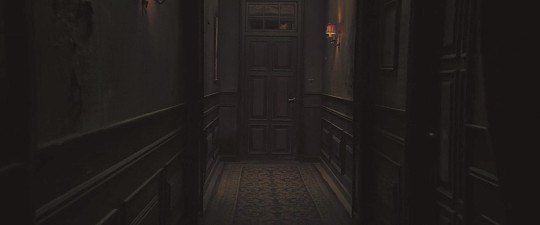





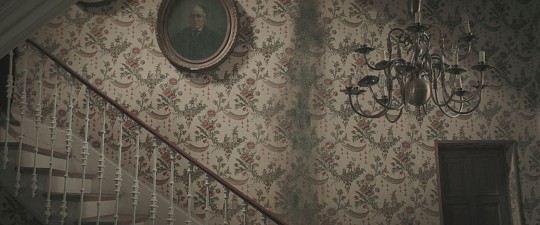

La influencia (Denis Rovira Van Boekholt, 2019)
0 notes
Photo




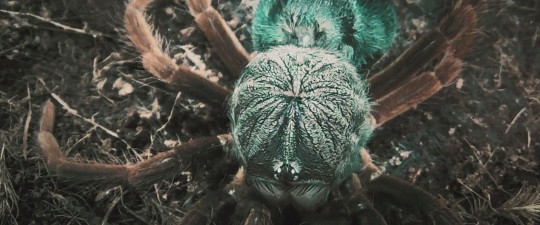



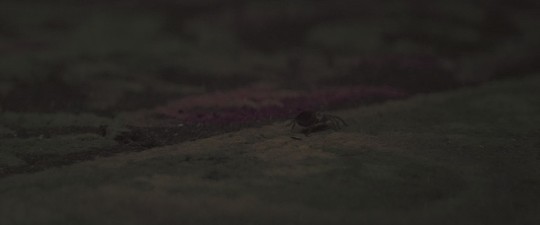

La influencia (Denis Rovira Van Boekholt, 2019)
0 notes